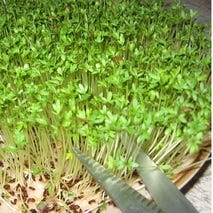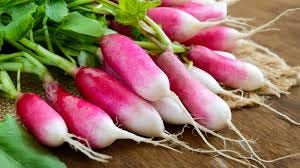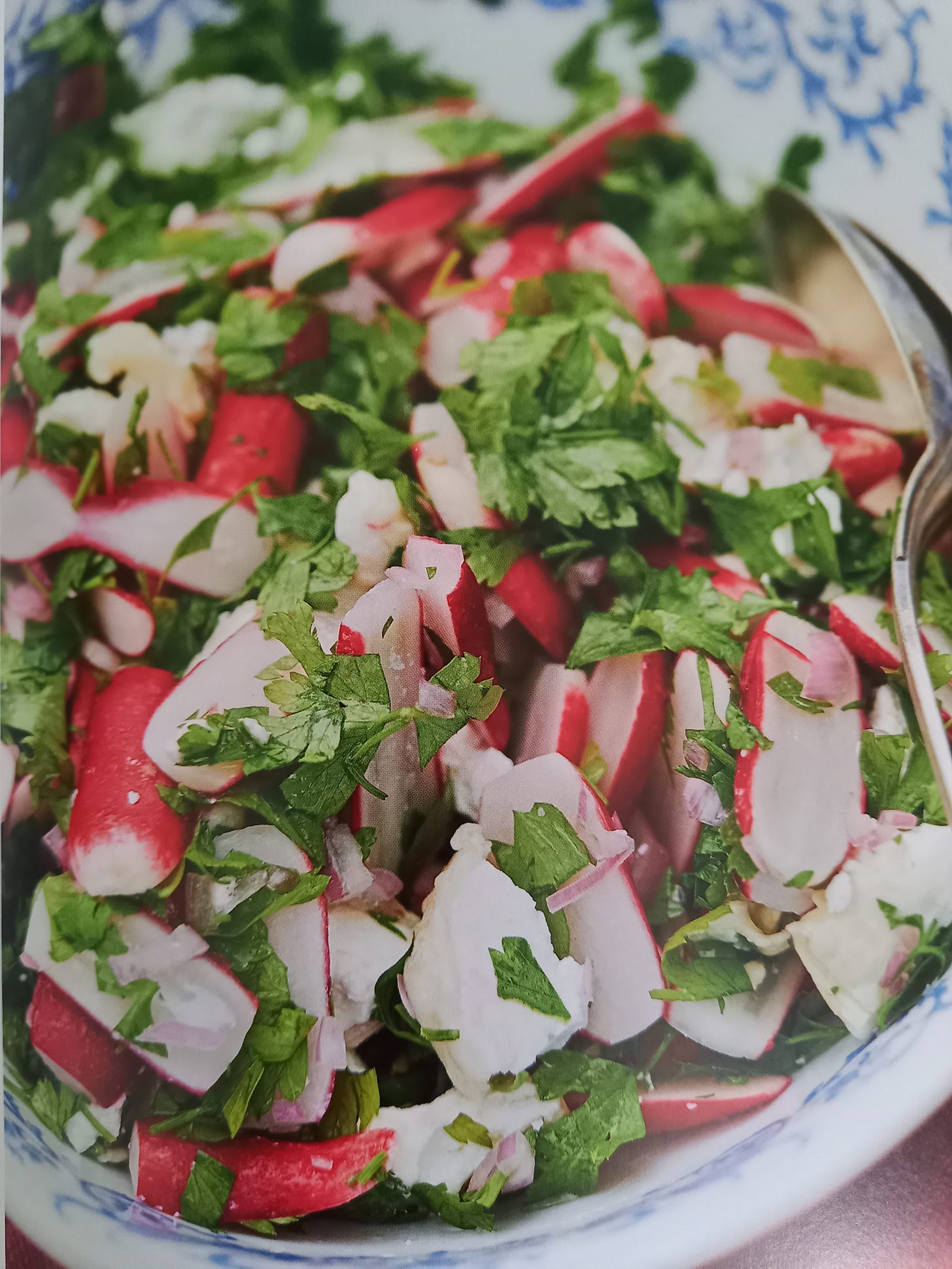Gardens on plates? The flannel as veg bed? Whatever next?
A recipe for daikon and radishes
I was introduced to gardening via a meat platter and packet of radish seeds. To buy himself some peace while tending to his vegetable plot, my father would hand my sister and me a china server each and instruct us to compete for winner of the Best Garden On A Plate.
We scurried about for what seemed to us an interminable time - though probably not to him - collecting materials from trees, bushes, paths and borders. Then, hiding away from each other's spying eyes, we squatted down with our plates, absorbed in creating the miniature gardens that diverted us from demanding our father's attention. Moss became lawns. Handbag mirrors, snaffled from our unsuspecting mother's dressing table, became ponds. The heads of daisies, buttercups, forget-me-nots and more the blooms in our miniscule flowerbeds. Then we would sit back on our haunches to await our father’s long-drawn-out judgement. My sister always won First Prize in the Under Sixes and I always came first in the Over Six class. It was sickening, both of us feeling short-changed even if there weren't any actual prizes. But we would compete afresh the very next time, certain that at some point one of us would beat the other cold. But father was a skilful diplomat.
As for growing vegetables, during the winter, we sprinkled dampened blotting paper with the seeds of mustard-and-cress to snip for sandwiches. Perfect child-friendly micro-greens, they grew almost overnight. If it was summer time, we were each allocated a narrow furrow in the garden into which to sow lines of radish seeds. These are quite the best seeds to encourage a child's potential gardening bug. They grow at speed, becoming edible trophies well inside a month, and - bar a little thinning out - need no care.
There are well over 100 varieties of radish, in colours from purple, yellow, green, and even black, to Schiaparelli pink. But supermarkets tend to focus only on the pink of long French Breakfast and the small globes more popular with the Brits and Americans.
In my view, French radishes are the best, though how the French like to eat them is intriguing. Before dipping them into salt, they spread them with a little cold butter, ostensibly to tone down their spiciness. It’s a practice, like drinking Pernod, I've never enthusiastically adopted anywhere but in France. French Breakfast taste like any other radish, although we rostbifs, always ready to challenge les froggies, contend they are actually milder, not spicier, than British round radishes. Whatever the case, I prefer the more satisfying crunch of a long cylinder between the teeth to a small globe the shape of a boiled sweetie.
There are more culinary possibilities to a radish than you might think. Although generally munched raw, they can be stir-fried, with curls of lemon zest and a squeeze of the lemon’s juice for a cooked taste similar to young turnip. Their leaves should also be tossed into the mix.

What's intriguing about radishes is how little we know of their origins. Unlike most other vegetables and fruits, there aren't any archaeological records to establish their ancestry, although because of the pure radishes still found there in the wild, they're thought to have come from South East Asia. While there are mentions of radishes in 3rd century BC, it’s only as late as the 1st century AD that they are recorded by Greek and Roman agriculturists.
The existence of daikon, as the foot-long white radish is known in Japan - and in India as mooli - was first recorded in the west in 1544, by a German botanist who unearthed one 3 feet long and 100lbs in weight. He doesn’t recount how he managed to dig it up to note its measurements.
I've become so addicted to pickled daikon I can feel my cheeks flooding with saliva as I write this. It was the Chinese, not the Japanese, who developed the root, for its oil. Pickled daikon are a good, quickly made standby to lodge in the fridge for folding into Asian recipes, or, with summer barbecues, for adding to a burger. I myself like to guzzle them on their own standing at the sink, perhaps with a Dirty Vodka Martini within easy reach. Tell no-one.
You simply peel a 600g/21oz daikon, cut it into matchsticks and immerse them in a mixing bowl in a brine of 1½ cup boiling water in which you have dissolved ½ cup sugar, ½ tablespoon salt, ½ teaspoon powdered turmeric, then added 1 cup rice vinegar. Let the daikon marinate until cool then fill a sterilised jar with the daikon and its marinade plus a bay leaf, a peeled and halved clove of garlic, and a few black peppercorns. Eat as soon as 2 hours later and keep stored in the fridge for up to 3 weeks if you’ve managed not to eat it all.
Last week, I cooked a quasi Middle East feast of shawarma lamb and roasted vegetables on a garlic sauce. The richness of the meal was cut, I’d like to hope, with a Radish and Parsley Salad that comes into its own with al fresco summer cooking. Just roughly chop the leaves of flat-leaf parsley, shave radishes (not your thumb) on a mandolin, mix together and toss with a sharply acidic vinaigrette. Add some crumbles of goat’s cheese if you wish.








Great story of the garden plate competition! Perhaps a precursor of the practice of giving every child a prize in primary schools these days, which as you say doesn't quite work to satisfy the children involved.